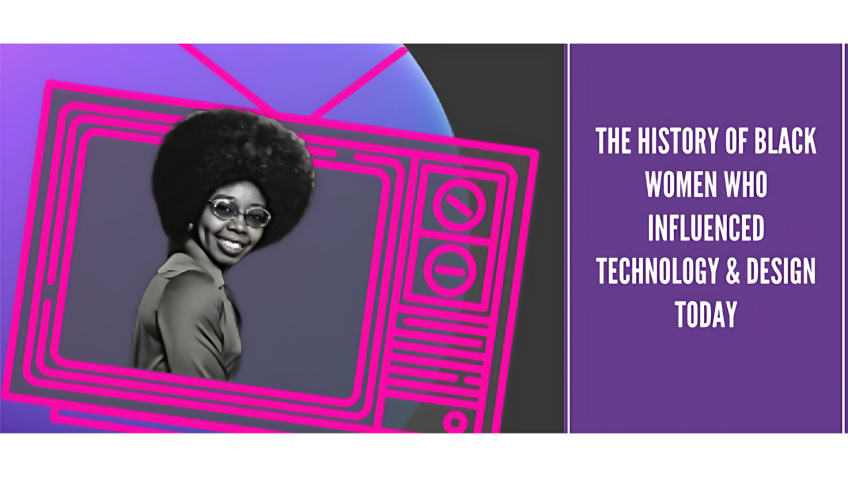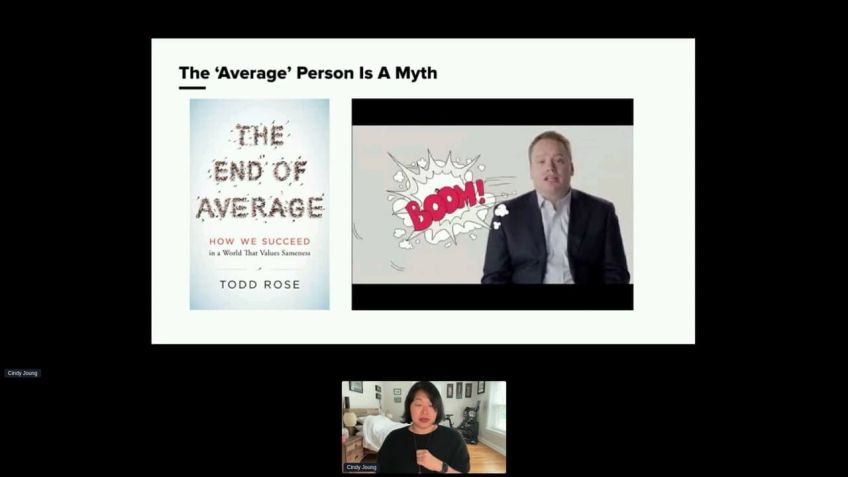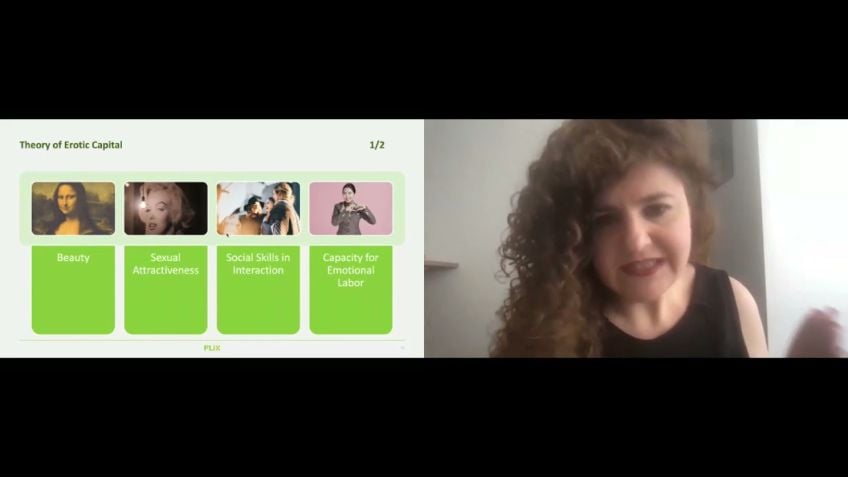Why does inclusive design matter in technology
Elizabeth Williams
Product OwnerInclusive Design and Why It Matters
About the Author
Welcome to my blog. I am Elizabeth, passionate about inclusive design and technology in general. I am keen on opening discussions to broaden engagement and refine technology's contribution to our modern lives. In today's article, I will talk about inclusive design and evaluate the necessity of such a concept in today's technology-dependent society. For more in-depth conversations, feel free to follow me on LinkedIn.
Understanding Inclusive Design
Several definitions surround the concept of Inclusive Design. A definition from Career Foundry, which aligns with my views, suggests that inclusive design is about creating products and services accessible and usable for as many people as possible without needing a specialized design or adaptation. The primary objective is to reflect the diversity of humans and their needs as we produce technology to satisfy those needs.
Why Inclusive Design Matters
In a world heavily relying on technology, ensuring that technology serves the diverse needs and backgrounds of users is imperative. This concept extends beyond differences in that users' ethnic background or gender also includes users with different abilities or disabilities. Simply put, everyone's features should be reflected in the usability of a product.
The Key Factors of Inclusive Design
Inclusive design is aligned with accessible design tools, diverse perspectives, diverse participation, acknowledgement of diversity, and having a broader beneficial impact. The focus goes beyond the product design, as it considers the whole design process.
Inclusive Design: Revising Pre-existing Products
Some companies occasionally revisit their products to apply inclusive design principles. For instance, Microsoft has revised its mouse, trackpad, and other products, considering those with differing physical features or disabilities.
Accessibility: A Close Ally of Inclusivity
Yes, the concept of accessibility is intricately linked with inclusivity. Web tools such as EqualWeb facilitates users to adjust their viewing experiences according to their specific needs or disabilities, such as visual-related impairments and epilepsy, ADHA, etc. This doesn't change the website but makes the site usable for a more significant number of people.
Conclusion
In conclusion, inclusive design, carefully integrated with accessibility, is a process aiming to serve a diverse group of people. It's beneficial for designers to remember the diverse end-users pool, conducting regular accessibility audits to ensure as many people as possible can benefit from your product. Feel free to connect with me on LinkedIn and further this discussion on inclusivity in technology.
Useful Resources
- Algorithms of Oppression
- The Digital Diaspora: Race for Cyberspace
- Career Foundry
Please remember that the inclusivity journey is continuous, and we need to keep auditing and adapting our designs to ensure they cater for a broader diversity range. Let's be a part of the solution and bridge the digital divide.
Video Transcription
Right. So I'll get started. Um I'm Elizabeth and I'm gonna be talking about inclusive design. Uh What I'm gonna try and do is uh go through all my slides within the 1st 15 minutes and then hopefully have at least five minutes for questions at the end.If there are any questions uh that we struggle to get in, I have left my contact details so you can drop me a message on linkedin. Um And through my linkedin, I'll be able to send my emails if anyone wants to continue and engage in any further discussions surrounding inclusive design or just technology in general. Um But yeah, the focus for today is inclusive design and why it matters in technology. Um But before that, I'm gonna kind of go into the, the definitions. There's quite a few online. Um But the main one, I think that kind of encompasses my opinions as well and, and quite a range of um technical scholars, opinions is the underlying theme. So from career foundry, I've secured this definition uh which defines inclusive design as ensuring products and all services that are accessible to and usable by as many people as reasonably possible without the need for special adaptation or specialized design quick. So why is inclusive design necessary?
Um I think this really just links to the day and age. It is uh we are very technology dependent and obviously this is um part of the women's tech Global Conference. Uh There are a lot of people working in technology, but there's a lot of people also using technology and you rely on technology to produce more technology and you rely on technology to learn. It's, it's a core, I guess we could say a core focus of most of most of our modern lives. Um And the digital gap is is expanding uh as quick as our use of technology is. So it really comes down to basically trying to reflect uh the opinions and, and just the general like diversity of, of humans and ensuring that we are meeting our needs as we're producing things to satisfy our needs. Um I thought there was a cool quote here. So this one centers, sorry, inclusive design centers, accessibility and announces exclusivity reduces bias and is quoted uh to be driven by the right team behind the design decisions and and user involvement process. Sorry us, involvement in the design process uh which can be hard to do.
Um We've already seen quite a lot of statistics surrounding the waiting in, in gender when it comes to technology um who is making it and why, why isn't that industry? Uh as diverse as, as the users is a question that frequently pops up. Um But the truth is there can be really large benefits of having just a diverse, a diverse team at the earliest stage of the design process. So it's kind of links to what I'm saying. But essentially the result of an inclusive design process is a better product, a design process that identifies the needs of a range of people um will satisfy the needs of a range of people. And we've seen uh there's quite a lot of uh popular youtube videos about this, but I think the most noticeable one was uh the hand dryer in a bathroom and a lot of hand dryer facilities now are automated. They just detect the sensory uh so they detect the hands. Um And there was an issue uh noted which I've actually linked in this powerpoint. So if you do wanna check it out, um where users with darker skin weren't being detected by the hand dryer, so they'd wash their hands and they'd just be standing under the ha hand dryer waiting for their hands to be detected by it because during the Q and A process and the testing process that wasn't identified and during the design process that wasn't considered, but if we had, you know, slightly more diverse uh range of perspectives and, and people in the room, it may have been picked up at an earlier stage because it may have been a factor that would have impacted someone in the room?
Ok. So why do we keep missing the mark? So bias through as early as the selection of those who produce signs, uh the mark can be missed while ahead of the conception of the idea. So this kind of links into who are those in the room, how can we ensure that most people are well as many people as possible are engaged and it reflects modern day society where we're all different. And this doesn't necessarily mean on the basis of someone's ethnic background or, or gender. It, it encompasses quite, quite a lot more than that. Um If someone has a certain disability, whatever features there are of a person, um It's good to have that reflected in the usability of a product because then they have an easier time using the product. Um But also you, you go with the idea knowing that your product has reached a wider range of people and has benefits a wider range of people. Uh This diagram kind of uh covers the dimensions of the core focuses of inclusive design dimensions. So, uh inclusive design is linked to inclusive process and tools uh which leads diverse perspectives, diverse participation, accessible development tools, accessible design tools. And then you also have a recognized diversity and uniqueness and uh broader beneficial impact. OK.
So the next is uh inclusive design, uh revising pre-existing products. Um So the image here is actually from Microsoft. Uh a year ago, Microsoft went back into some of their products and they try to envision their products as being more accessible by having a more inclusive design process.
So some of these products, well, I guess all of these products are, are pretty much digitally enhancing, but these include like a mouse and a track pad and these basically are tailored or created um including and considering those who may have uh different physical features uh than, than others or those who may have um a physical disability and still do engage in, you know, the use of technology as to do most people um at this point, but require something slightly more suited to their needs.
So I thought this was pretty cool to look at. Um and it's a function or a mouse that can be used by pretty much anyone, but it also acknowledges that we're all different. And I think that's quite a good thing to see a larger company like Microsoft um starting to acknowledge. OK. So now I'm gonna kind of link to accessibility and I know uh the discussions of inclusivity and accessibility kind of there's a bit of divisiveness around how linked they are, but I thought I can't mention one without mentioning the other. Um So in terms of examples of enhancing digital inclusivity through collab collaborative accessibility driven development, um I came across this really cool thing. It was actually while I was shopping online. Um it's a plug in extension on the Bershka website and I'll show you what that looks like, just being cautious at the time, I'll show you what that looks like in a second. But essentially this plug in um can alter using A I, it can alter the way a user sees the screen depending on which accessibility profile seats there needs.
So if you have someone who has a visual related impairment such as uh blindness or color blindness, they can adjust their setting um to ensure they view the website in a way that's in a way that basically suits and and is adjusted to their needs. So we have some of epilepsy. A DH D uh learning elder, there's quite a few of them, but this is just a screenshot and I thought this was quite good. I'll show you how this looks like uh in one of the pages coming. Um But there's two key method approaches and there's two ways in which they think um accessible design focuses on the outcome or the end result of the design project is based on accessibility guidelines published by various governmental and industry groups. And then inclusive design is closely related to accessibility. But rather than an outcome, it's a methodology that how to approach design. And it's a process for creating a design that can be used by a diverse group of people. So I wanted to show this because this is actually a, a screen cap that I'm seeing from the BSA website. So this one's when I've adjusted the setting using the Equality web uh extension. I've made this epilepsy compliant. And you can see on the left that one's the default, but you can see there's a slight tweak and change in, in the way in which the website presents itself. Um But I think what's cool here is we haven't actually changed the website whatsoever.
We've got the exact same website. It's just the usability has extended because the amount of needs it meets now is larger. Thanks to the extension. Cool. Um Thanks for getting involved and, and taking part in my discussion. Uh Do you guys have any questions? I see there's a couple in the chat. Oops, all these were related to the screen. Cool. Any questions from anyone uh guidelines about these as in uh accessibility or inclusivity? There are quite a lot of resources. Um Sorry, I'm just going on here. There are quite a lot of resources online. Um I use the accessibility audit which is also really good. Um And career foundry which is also quite good and the plug in name. Sorry, one second, let me get to that page. It's equal web. Um I believe they do uh contracts with, with companies depending on the size, but you can get this added to uh definitely added to Ecommerce websites. Um So I would recommend that. No worries. Cool. Cool. Ok, so I did wanna recommend a couple of resources. I can see you've still got a little bit of time. Um I do recommend uh reading Algorithms of oppression and the Digital diaspora race for cyberspace. Um It's quite a lot of resources online, but these are, these are books that I've enjoyed and I think if you've kind of enjoyed the overall theme, I definitely recommend this as well.
Uh And checking these out and in terms of contact do feel free to reach out to me on linkedin. Uh I've left my email address. Sorry, my linkedin URL um above. Cool. Do you guys have any more questions? I believe we still have about five minutes. Oh, sorry. Ok. I've just, I've just seen the Q and A section. Thanks Samantha. Um How do you make sure that you are making things accessible for all types of uh different disabilities and not just one that's really hard to achieve admittedly. Um I've worked on quite a lot of user journeys in my past roles and quite a lot of uh e-commerce. So that's my main remit. I'm in a sales now. Um But I think the common factor basically with it is you need to be running audits and you need to be ensuring that you have a range of users involved in the focus groups. Um So if there's anywhere to start, I'd say run an accessibility audit. I'm assuming it's an application so on your application. Um and just double check, you know, are you able to use the voiceover tool? Is your font physically accessible? Is it dark font over a light background? Things like that? Um I did actually have a resource. Um If you add me on linkedin, I will try and send that to you. It looks like I can also type an answer. So if I'm able to, I'll try and paste it there. Um The plug in one that was equal web. Ok.
Now, I can see, I still have a few more. Uh what else would you like to see included in terms of inclusivity and websites? Sure. It's, it sounds like a bit of a cop out answer, but I really appreciate the fact that uh A DH D and basically um neuro neurological uh ranges of features were included because I tend to see um sometimes like, well, I think most websites now have acknowledged that you need to do for over like background, but you don't tend to see uh things uh cater towards elderly and a DH D.
Um So I actually was quite happy when I saw that. Um, what is the most common Miss Mark you have seen in your experience? Yeah, I'd say pretty much the same. I'd also say um it's, it's quite difficult but I think sometimes when we create technology, we're just thinking from it being ok, the person already knows how to use this and there is a technology gap and there are people who still haven't been able to use a computer yet or have, haven't had much exposure to technology.
So I do think we're not very inclusive or tailored towards, you know, maybe the elderly who have suffered as part of that digital gap. Um In my opinion, uh Yeah, I mentioned accessibility order. It's not related to equal web. Um But an accessibility order is something you can carry out internally. I think I found my um resource from one of the Googled options, but there is a specific one that I really, really liked. So I'll try and send that at one point. Um But essentially an accessibility order is something you, you conduct when you're trying to assess how accessible your website is. And typically there's a number of markers that you assess against. Uh It's a lot better to have someone who's a third party. So not someone who actually works within the website space or works from that company, but a third party is a lot better. Um And then you can run an internal audit just to check every now and then. But definitely if you have the chance to look into accessibility audits because they, they do help enhance your, your web journeys. Cool. I think that is pretty much it. Um looks like we're just about there. Thank you so much for taking part and yeah, feel free to add me on linkedin. Um And I'll be joining a couple of the, the discussions from here on out, but it's been very enjoyable. So, thanks all.






